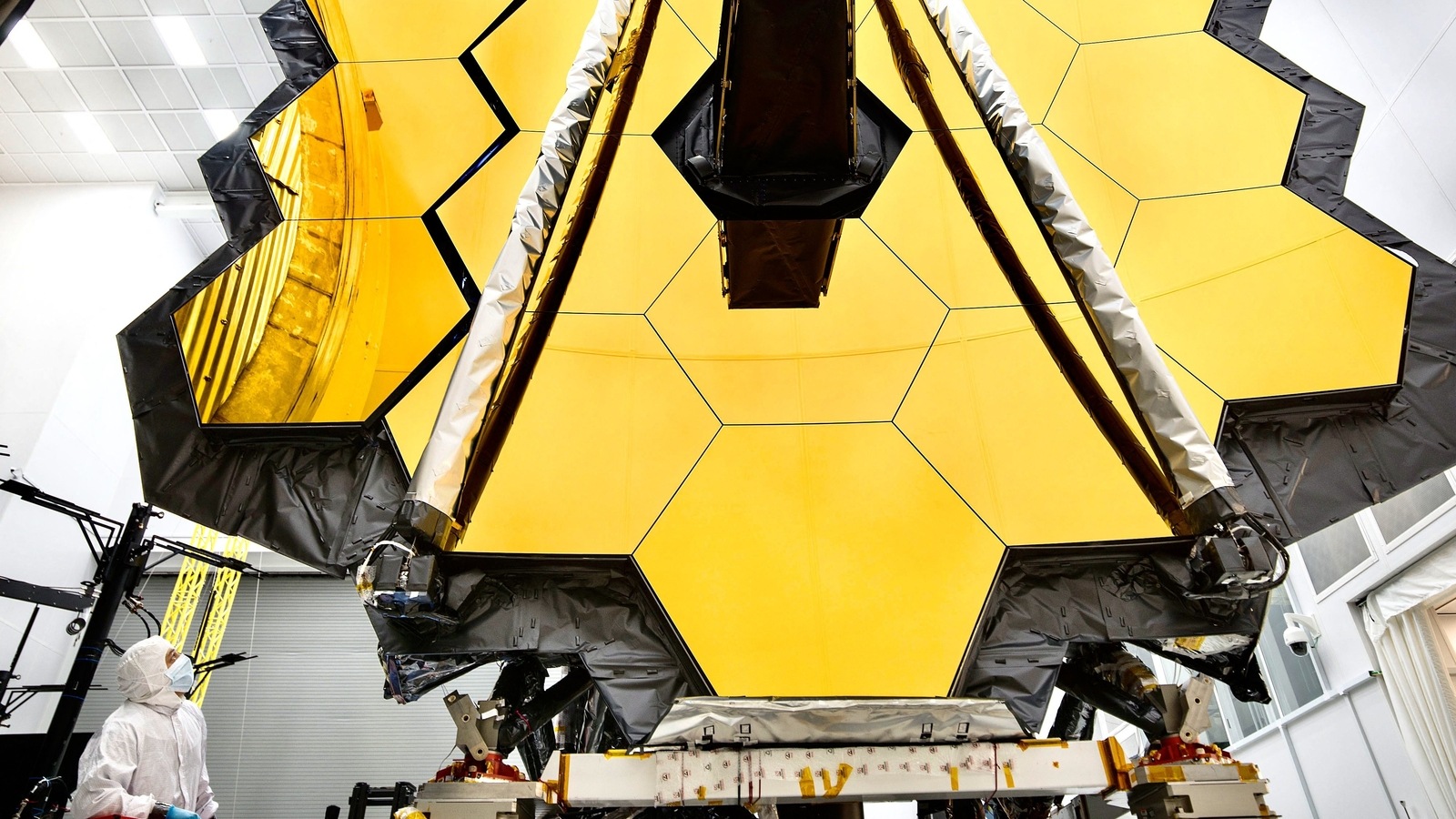For the James Webb Telescope, Now the Real Work Begins
With the help of the president of the United States, the James Webb Space Telescope unveiled its first, full color images this week, overpowering older photos by the Hubble Space Telescope.

With the help of none other than the president of the United States, the James Webb Space Telescope unveiled its first, full color images this week, overpowering older photos by the Hubble Space Telescope and garnering gasps of wonder from all over the world.
As impressive as those first pictures are, not to mention the telescope's ability to see almost to the beginning of time, there's a lot more to the James Webb telescope. On this special episode of Bloomberg's Giant Leap, we meet five of the many scientists who will be using it to analyze not only the earliest galaxies, but unexplored regions of our own solar system and Earth-like planets orbiting nearby stars that just might support life.
Bold and Risky, the Webb Mission Is Already a Success
(Bloomberg Opinion) -- One day, perhaps, it will rank among the iconic images of a new space age: a sharp and sublime technicolor mélange, staring back at the human species from 13 billion years in its past. Some two decades and $10 billion in the making, the James Webb Space Telescope has sent back its first snapshots from orbit. It didn't disappoint.
Its initial image, unveiled at a White House ceremony Monday, focused on a galaxy cluster named SMACS 0723. The cluster's gravitational field acts as a kind of magnifying glass, helping to illuminate yet more distant galaxies that might otherwise be too dim to see. The result was a canvas of shimmering stars and nascent galaxies and unnerving cosmic depths that included the oldest light ever captured.
“We're going back almost to the beginning,” said NASA Administrator Bill Nelson. By the beginning, he meant the start of the whole galactic show: the big bang, the explosive expansion of space and time outward from the singularity that is thought to have preceded all existence. It's by turns a thrilling and unsettling ambition.
On Tuesday, NASA released further images that hinted at the Webb's vast potential. They included a group of galaxies, seemingly engaged in an interpretive dance, called Stephan's Quintet; the Southern Ring Nebula, which surrounds a dying star 2,500 light years away; and the Carina Nebula, where stars are born in a scorching haze of dust and ionized gas. Officials also presented data gathered from the exoplanet WASP-96b, which included evidence of water vapor and clouds.
That the Webb even reached its orbit — at the L2 Lagrange Point, a million miles away — is something of a miracle. It's among the most expensive and complex objects ever shot into space. Both its main mirror (a 21-foot, gold-plated, 18-segment behemoth) and its sunshield (comprising hundreds of motors, pulleys, cables, hinge assemblies and release mechanisms) had to unfold themselves in space according to exacting sequences. By one estimate, the project had 344 single points of failure – meaning everything, quite literally, needed to go right.
So far it has. The Webb will now commence its science missions, seeking out remnants of the early universe, studying how galaxies and stars form, and looking for signs of planetary life. If it continues to operate as hoped, it's not crazy to think of the Webb as one of the most consequential pieces of technology yet devised — a mini-masterpiece of science and software and engineering that may answer some of the most fundamental questions of human existence.
“We can see possibilities no one has ever seen before,” said President Joe Biden. “We can go places no one has ever gone before.”
That kind of vision — bold, inventive, vital — has been guiding the American space experiment for some seven decades now. The best may be yet to come.
The Editors are members of the Bloomberg Opinion editorial board.
Catch all the Latest Tech News, Mobile News, Laptop News, Gaming news, Wearables News , How To News, also keep up with us on Whatsapp channel,Twitter, Facebook, Google News, and Instagram. For our latest videos, subscribe to our YouTube channel.





























